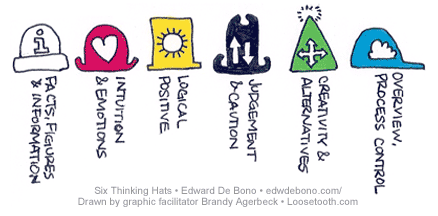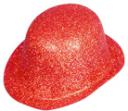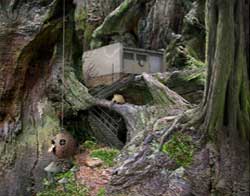 We all had a great time working with and through the Samorost games over this last month. What I found myself wondering though, was why it had such an impact on the students’ writing. Was it just a case of grabbing their collective imagination, was it that they worked on the game as a class – problem solving together and collectively solving the game, or was it the fact that it was a game that the students found so engaging?
We all had a great time working with and through the Samorost games over this last month. What I found myself wondering though, was why it had such an impact on the students’ writing. Was it just a case of grabbing their collective imagination, was it that they worked on the game as a class – problem solving together and collectively solving the game, or was it the fact that it was a game that the students found so engaging?
The class and I used De Bono’s thinking hats to organize our thoughts about the games (see previous post and individual student posts) but this didn’t really answer my questions.
I have explored narratives with many age groups over the years: we’ve used stories and texts to inspire, we’ve looked at paintings and pictures to set scenes and watched movies to see characters and explore story lines. I have always tried to share whatever was available to help my students “put pictures and experiences in their heads” to use in their writing. Sometimes results were encouraging, but never has the quality of ALL student writing been as high as it was this month, using Samorost.
Tim Rylands’ blog and website are inspirational, and his success with using MYST with students to help their creative writing encouraged me to have a go at using some form of game to try out his ideas – albeit in a small and isolated way.
So I knew that this had been tried before, that success had been documented before, but still no real why was this so?
What often happens when I’m unsure about things: I ask my class what they think.
This is what they came up with:
- the scenes and environments are out of the ordinary – they appeal to you because they are different/ unexpected
- the environments show great detail which you can describe
- you are within the scene, not static, there are hidden things that you don’t expect
- it is surprising – keeps you active
- the game aspects – you think differently in a game rather than in a book – you are actually DOING IT
- it could really be happening to you
- you are part of what is happening
- you control where you go – in a picture or book you have to stay where the character is
- you choose what happens to you – you make the adventure
- the sounds give you the mood and the atmosphere
- it’s interactive – you use all of your senses
Interesting, don’t you think?
Games are very important to these students. They like being the centre of the game, in control, and making decisions. It gives them the experiences that they could possibly write about. They have sensory experiences to recall, they have scenery to describe, choices they’ve made, places they have explored. Experiences ready and waiting to be articulated, discussed, expanded upon, labelled, thought about, talked about, shared and finally written about. Cool!
Do it!
Talk it!
Read it!
Write it!











